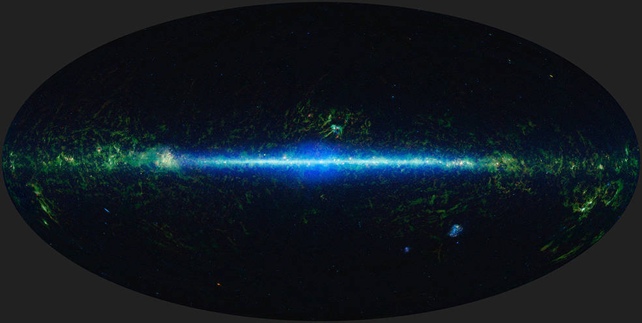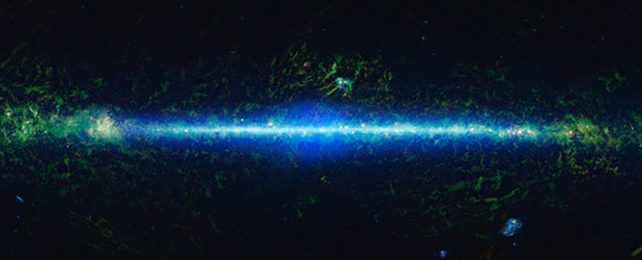NASA continues to outdo itself with the majestic images of space that it keeps releasing – but even by the agency's high standards, a 12-year timelapse of the entirety of the night sky is an impressive achievement.
The imagery has been captured over those years by the NEOWISE (Near-Earth Object Wide Field Infrared Survey Explorer) space telescope, which was originally launched in 2009 under the previous name 'WISE' to study the Universe outside of our Solar System.
It has since been repurposed, and renamed, to track near-Earth objects including asteroids and comets.

Data collected by NEOWISE gives scientists an invaluable insight into how celestial objects are moving and changing over time (time-domain astronomy) – whether that's stars exploding or wandering across the night sky, or black holes gobbling up gas.
"If you go outside and look at the night sky, it might seem like nothing ever changes, but that's not the case," says astronomer Amy Mainzer, from the University of Arizona, which is the principal investigator for NEOWISE.
The readings taken by NEOWISE show the location of hundreds of millions of objects, and the amount of infrared light each one is emitting. This information can then be analyzed to figure out what an object is doing.
An entire sky's worth of data is collected every six months (the time it takes the telescope to travel half the way around the Sun), and astronomers have now stitched together 18 of these maps to form the time lapse.

The maps have been particularly useful for studying brown dwarfs – objects that don't quite have the mass to spark the fusion necessary to become a brightly-burning star, despite starting their existence in similar ways. Those that happen to be closer to Earth appear to zip faster across the sky than more distant objects, enabling NEOWISE to pick them out more easily.
Around 260 brown dwarfs have now been identified by the telescope, and thanks to its investigations we know about twice as many Y-dwarfs – the coldest brown dwarfs that are of particular interest to astronomers, providing clues on the efficiency of star generation and its timing in the evolution of our galaxy.
"We never anticipated that the spacecraft would be operating this long, and I don't think we could have anticipated the science we'd be able to do with this much data," says astronomer Peter Eisenhardt, from the NASA Jet Propulsion Laboratory in California.
We're also learning more about how stars form through the telescope's sky scanning: protostars stand out as flickering objects before becoming stars, and scientists are now tracking almost 1,000 of them to see how they develop.
Then there's perhaps the most compelling celestial object of them all – the black hole. Data from NEOWISE can be used to identify the bursts of infrared light from the clouds of matter churning around black holes, allowing us to see these objects at a greater distance.
The work is far from finished, and NEOWISE continues on its mapping journey, with two more sky maps due in March 2023. Expect a lot more to be revealed by the project – activity that you can't see when gazing up at the stars at night.
"Stars are flaring and exploding," says Mainzer. "Asteroids are whizzing by. Black holes are tearing stars apart. The Universe is a really busy, active place."
You can learn more at the NEOWISE Project website.
